Search
Search Results

Image
Mycenaean Stirrup Jar
A Mycenaean terracotta stirrup jar, c. 1200 BCE. The name derives from the resemblance of the handle to a double stirrup. The handle is often decorated with a false spout whilst the true spout is to the side and separate from the handle...
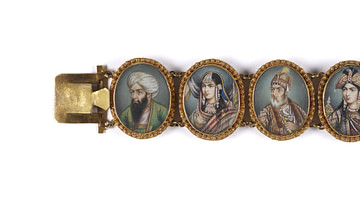
Image
Bracelet with Mughal Miniature Portraits
Gold bracelet with miniature portraits of three Mughal emperors and their royal wives, watercolors on ivory by Indian Mughal miniaturists in Delhi (1860-1870). The third oval from the left is a portrait of the last Mughal emperor, Bahadur...
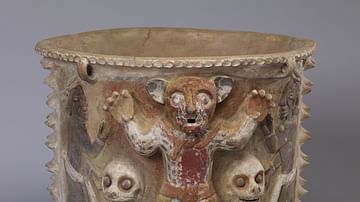
Image
Maya Urn with Jaguar Figure & Skulls
A polychrome urn with a jaguar figure and skulls. Classic Maya, 600-900 CE, Guatemala. (Walters Art Museum, Baltimore)
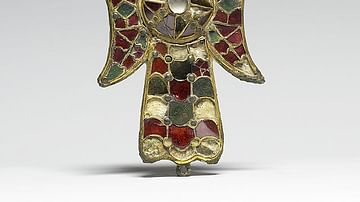
Image
Visigothic Fibula
This fibula (pin used for fastening a piece of clothing) is one of a pair made by a Visigothic artist out of gold over bronze with gemstones, glass and meerschaum. 6th century CE. Walters Art Museum, Baltimore, MD
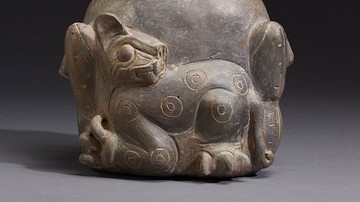
Image
Chavin Stirrup-spouted Jar
A Chavin stirrup-spouted vessel depicting a jaguar and cactus. 900-200 BCE. (Walters Art Museum, Baltimore, USA)
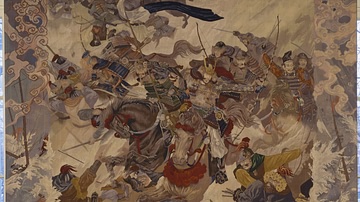
Image
The Mongol Invasion of Japan
"The Mongol Invasion" is a Japanese silk tapestry by Kawashima Jimbei II (Japanese, 1853 - 1910 CE), based on an oil painting by Morizumo Yugyo (1854 - 1927 CE). The painting depicts the Mongol Empire's failed invasions of Japan in in 1274...
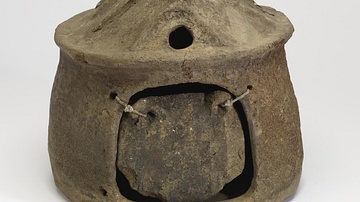
Image
Villanovan House Funerary Urn
A terracotta funerary urn in the form of a house from the Villanovan culture of central Italy. 8th century BCE. (Walters Art Museum, Baltimore, USA)
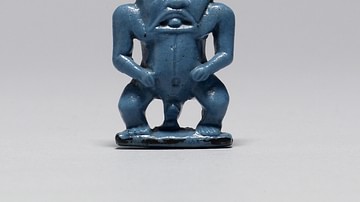
Image
Bes Amulet
A faience amulet of the Egyptian protective deity Bes. Egypt, 950-700 BCE. (Walters Art Museum, Baltimore, Maryland, USA)
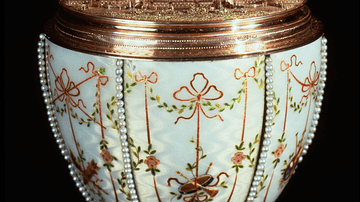
Image
Gatchina Palace Egg by Fabergé
The 1901 Gatchina Palace Egg by Peter Carl Fabergé (1846-1920). The egg was given by Tsar Nicholas II (r. 1894-1917) to his mother the Empress Dowager Marie Feodorovna. The egg is made of gold and white enamel with painted decoration. The...
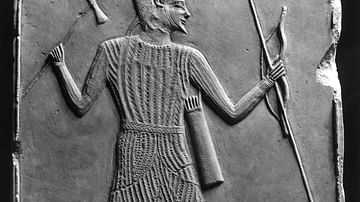
Image
Relief of a Scythian Warrior
Relief of a Scythian warrior with an axe, bow, and spear, 4th-2nd century BCE.
Walters Art Museum, Baltimore